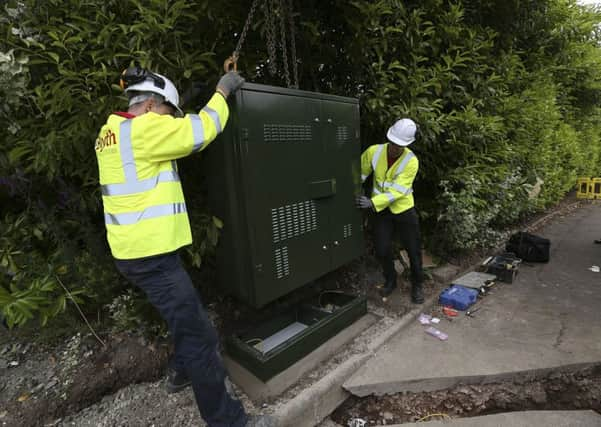Ricky Nicol: Digital crisis a threat to economic health


By itself this doesn’t mean much to most people, perhaps why it continues to go under the radar, discussed by a tech community on tech news-outlets. However, let’s be clear, this is an impending crisis that threatens the future health of our economy in a digital world.
Considering Spain boasts 80 per cent FTTP and Scandinavian countries are uniformly over 70 per cent, it is easy to see that something in the UK is awry.
Advertisement
Hide AdAdvertisement
Hide AdMost advertised fibre connections are simply to the cabinet on the street, with outdated copper then taking over to the home or business – the equivalent of taking a plane 498 miles of a 500 mile trip, just to walk the last two at a very leisurely pace.
While the Scottish Government’s R100 challenge to give all Scottish premises access to speeds exceeding 30 megabits per second by 2021 is achievable, it lacks ambition in a world increasingly reliant on fast, dependable networks – as the ‘internet of things’ becomes a reality and more aspects of daily life, from phones to TVs run via a network connection.
While we lag behind our mainland friends our current service will suffer, but more importantly it is it the legacy that the continued use of copper infrastructure that will do most harm.
Every new copper cable laid in Scotland builds in years of inconvenience as roads will need to be redug when the inevitable upgrades take place. In rural areas especially, it is a sticking plaster.
So where did we go wrong? The reasons for this are complex and hard to attribute to a single source but in a number of European countries, tech infrastructure of this kind is a public utility receiving heavy government investment.
Nationalisation is not a silver bullet and would be nearly impossible to achieve in a practical and political sense.
However, more cooperation is needed across the board and greater incentives and investment needed to ensure that businesses and consumers are receiving the kinds of speeds they deserve.
The advantages of FTTP over traditional networks are clear – distance does not affect speed (which is many times faster), it is much better at dealing with high demand, meaning peak use will have a lesser impact to those logging on, and it will not be likely to be outdated for more than 100 years.
Advertisement
Hide AdAdvertisement
Hide AdThis is a necessity. As computational power increases, file sizes too will swell and with them the products and services offered across the globe. Without the infrastructure to match other countries we will fall behind, and fast.
There is not a company out there that does not depend to some extent on the country’s digital infrastructure – not just keeping afloat but in delivering quality that keeps pace with the best in the world.
Ricky Nicol is chief executive of telecommunications network provider, Commsworld